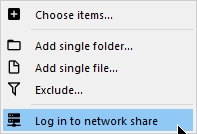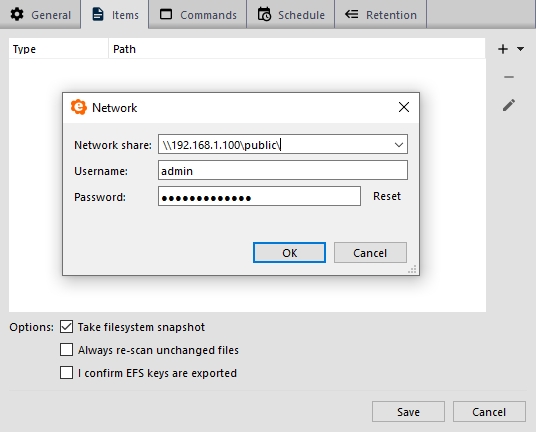Backing up Windows Network Shares and UNC Paths
eazyBackup can back up Windows network paths and can also back up to Windows network storage (SMB / CIFS). However, because eazyBackup runs as a service user, there are some issues with authentication to be aware of.
Please note that if you are using eazyBackup to back up data from a network device, ideally you should install eazyBackup directly on the device instead of backing it up over the network. This will also significantly improve performance as less data needs to be transferred over the LAN.
Mapped network drives
On Windows, each logged-on user session has its own set of mapped network drives. The service user account is unlikely to have any mapped drives. If you see error messages such as "WARNING Missing: 'Z:\'", this is likely due to the lack of mapped drives. You can work around this by using a UNC path instead.
You can also do this manually:
In eazyBackup, when choosing items in a Files and Folders Protected Item, you can use the "Options" button > "Add " to browse inside a UNC path. Note that this browsing occurs as your logged-in Windows user, not as the service user, and may have different file access as a result. All backup jobs run as the service user.
Authentication
If the UNC share requires authentication and you see error messages such as "WARNING Lstat: CreateFile \\?\UNC\...: Access is denied", the reason is likely that the service user account is probably not logged-in to the UNC share.
Edit the Protected Item, from the "Items" tab click the down arrow next to the "+" button.

Select the "Log in to network share" option from the menu to add your share credentials.

Add the path to your network share, and add network share username and password as shown in example below.

You can also work around this issue in eazyBackup by changing the Windows Service to use a different user account.
Change service user on the
eazyBackup (delegate service)service.If you are using eazyBackup on a Windows Server machine that is acting as the Domain Controller, you must choose a domain account.
Last updated
Was this helpful?